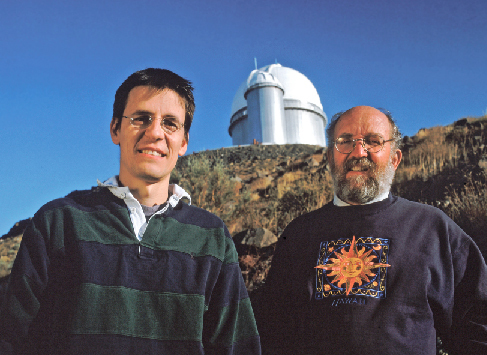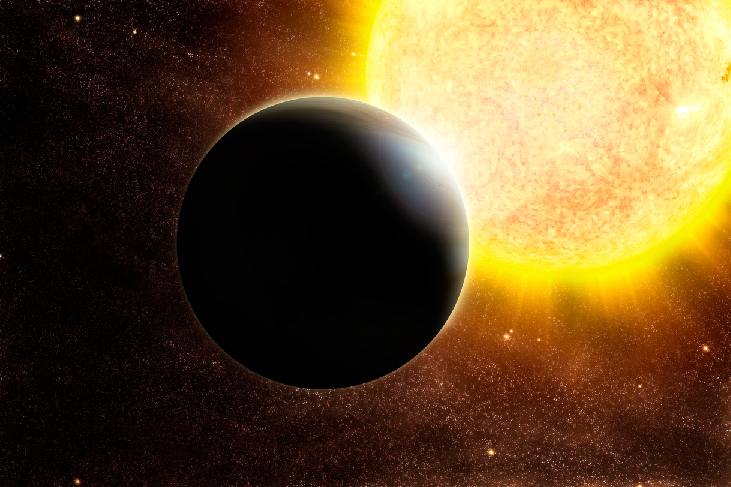| << Chapter < Page | Chapter >> Page > |

Mayor and Queloz’s findings mean the planet must be very close to 51 Pegasi, circling it about 7 million kilometers away ( [link] ). At that distance, the energy of the star should heat the planet’s surface to a temperature of a few thousand degrees Celsius (a bit hot for future tourism). From its motion, astronomers calculate that it has at least half the mass of Jupiter The Doppler method only allows us to find the minimum mass of a planet. To determine the exact mass using the Doppler shift and Kepler’s laws, we must also have the angle at which the planet’s orbit is oriented to our view—something we don’t have any independent way of knowing in most cases. Still, if the minimum mass is half of Jupiter’s, the actual mass can only be larger than that, and we are sure that we are dealing with a jovian planet. , making it clearly a jovian and not a terrestrial-type planet.

Since that initial planet discovery, the rate of progress has been breathtaking. Hundreds of giant planets have been discovered using the Doppler technique. Many of these giant planets are orbiting close to their stars—astronomers have called these hot Jupiters .
The existence of giant planets so close to their stars was a surprise, and these discoveries have forced us to rethink our ideas about how planetary systems form. But for now, bear in mind that the Doppler-shift method—which relies on the pull of a planet making its star “wiggle” back and forth around the center of mass—is most effective at finding planets that are both close to their stars and massive. These planets cause the biggest “wiggles” in the motion of their stars and the biggest Doppler shifts in the spectrum. Plus, they will be found sooner, since astronomers like to monitor the star for at least one full orbit (and perhaps more) and hot Jupiters take the shortest time to complete their orbit.
So if such planets exist, we would expect to be finding this type first. Scientists call this a selection effect —where our technique of discovery selects certain kinds of objects as “easy finds.” As an example of a selection effect in everyday life, imagine you decide you are ready for a new romantic relationship in your life. To begin with, you only attend social events on campus, all of which require a student ID to get in. Your selection of possible partners will then be limited to students at your college. That may not give you as diverse a group to choose from as you want. In the same way, when we first used the Doppler technique, it selected massive planets close to their stars as the most likely discoveries. As we spend longer times watching target stars and as our ability to measure smaller Doppler shifts improves, this technique can reveal more distant and less massive planets too.

Notification Switch
Would you like to follow the 'Astronomy' conversation and receive update notifications?